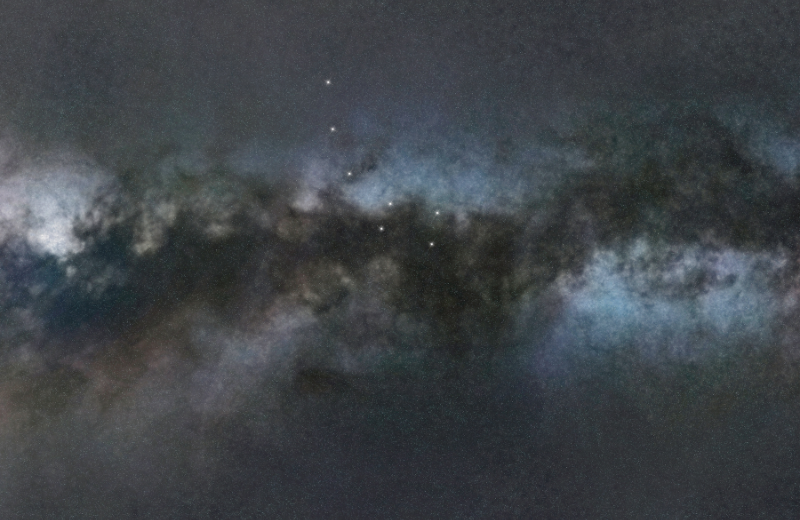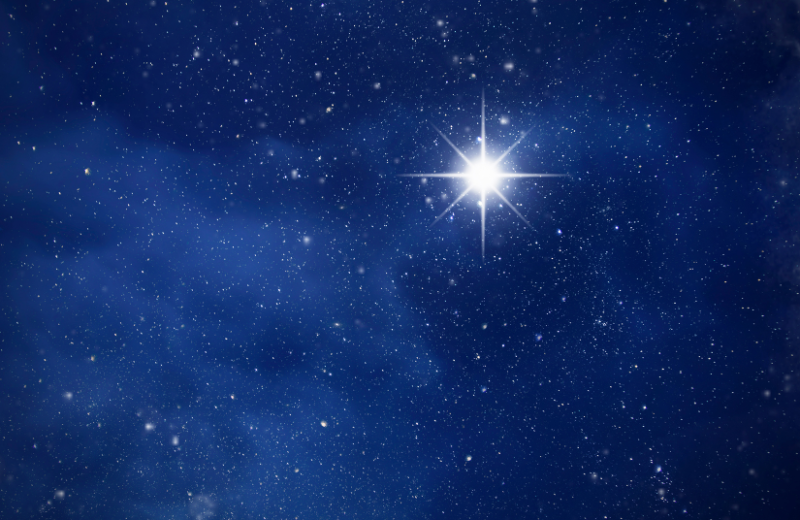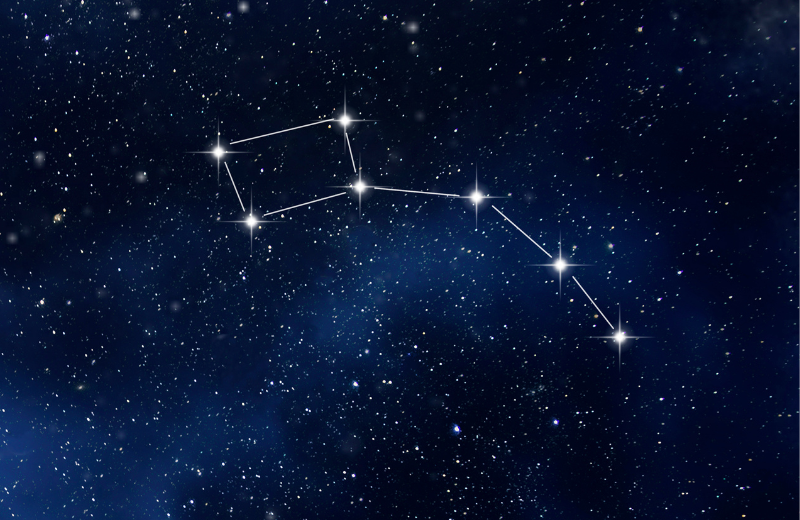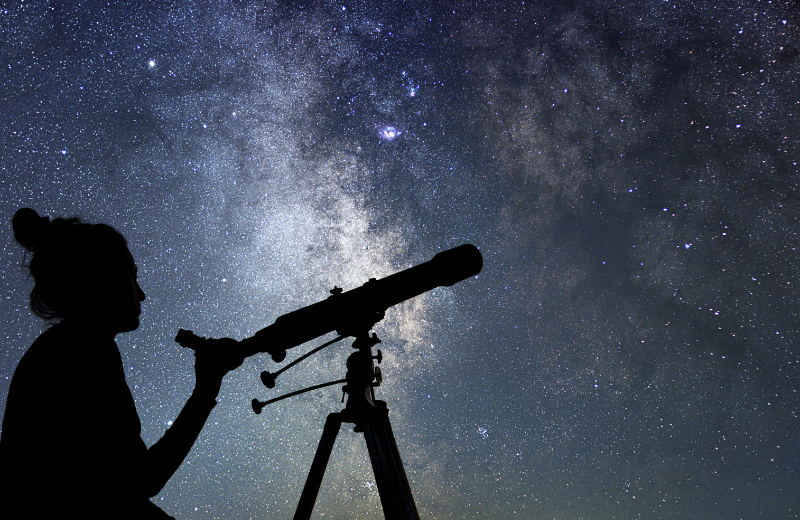The night sky is a fascinating sight, with constellations serving as both navigational tools and sources of mythological wonder. One such constellation, Ursa Minor, also known as the Little Bear, holds a special place in the sky and in our imaginations. Whether you're an amateur astronomist or just curious about the stars, Ursa Minor is a constellation worth getting to know.
Jump to:
- What is the Ursa Minor Constellation?
- What Does Ursa Minor Look Like?
- The Ursa Minor Constellation Myth
- What Does the Ursa Minor Constellation Symbolise?
- What Galaxy is Ursa Minor In?
- How to Pronounce Ursa Minor
- Ursa Minor's Stars
- Nebulae in Ursa Minor Constellation
- Finding Ursa Minor in the Sky
- Fun Facts About Ursa Minor
- Study Astronomy for £29
Recommended for you!
Best SellersWhat is the Ursa Minor Constellation?
Ursa Minor, or the Little Bear constellation, is one of the most well-known and important constellations in the Northern Hemisphere. It’s best known for containing the Little Dipper, a smaller and fainter counterpart to the Big Dipper found in the Ursa Major constellation. Ursa Minor also plays a role in navigation, thanks to its most famous star, Polaris, the North Star. The constellation's name, Ursa Minor, translates to "Little Bear" in Latin, reflecting its close relationship with the larger Ursa Major, or the Great Bear.
What Does Ursa Minor Look Like?

The Ursa Minor constellation is relatively small and consists of seven main stars, which together form the Little Dipper. The Little Dipper is shaped like a ladle or spoon, with a curved handle and a small, rectangular bowl. Polaris, the North Star, sits at the end of the handle, making it easy to identify.
While the stars of Ursa Minor are not as bright as those in the Big Dipper, they are still visible to the naked eye in a dark sky. The stars of Ursa Minor are arranged in such a way that they resemble a smaller version of the Big Dipper, making it a bit harder to spot, especially in areas with light pollution.
The Ursa Minor Constellation Myth
Like many constellations, Ursa Minor is steeped in mythology. The most famous story associated with Ursa Minor comes from Greek mythology and involves the characters Callisto and Arcas.
According to the myth, Callisto was a beautiful nymph who caught the eye of Zeus, the king of the gods. This angered Zeus's wife, Hera, who transformed Callisto into a bear. Years later, Callisto's son, Arcas, encountered his mother in her bear form while hunting. Unaware that the bear was his mother, Arcas was about to kill her when Zeus intervened. To save them both, Zeus placed Callisto and Arcas in the sky as Ursa Major (the Great Bear) and Ursa Minor (the Little Bear).
This myth explains why Ursa Minor and Ursa Major are seen close together in the night sky and adds a layer of meaning to these constellations, reminding us that the stars have been part of human storytelling for centuries.
What Does the Ursa Minor Constellation Symbolise?

Ursa Minor holds significant symbolic meaning across different cultures. Most notably, the constellation is associated with guidance and direction due to the presence of Polaris, the North Star. Polaris has been a reliable navigation point for centuries, helping sailors and explorers find their way. Because of its steady position in the sky, Polaris—and, by extension, Ursa Minor—symbolises constancy, hope, and a guiding light in times of uncertainty.
In some spiritual interpretations, Ursa Minor represents the idea of finding your path and staying true to it, even when the journey seems difficult. The constellation serves as a reminder that, like Polaris, we can all find our way if we keep our eyes on the light that guides us.
What Galaxy is Ursa Minor In?
Ursa Minor is part of the Milky Way galaxy, which is the galaxy that contains our solar system. The Milky Way is a barred spiral galaxy, and Ursa Minor, along with all the stars visible to the naked eye from Earth, lies within this vast stellar system.
The stars of Ursa Minor, like those in other constellations, are all located within the Milky Way, though they are at varying distances from Earth. Polaris, the most famous star in Ursa Minor, is approximately 323 light-years away, while the other stars in the constellation are also relatively distant.
How to Pronounce Ursa Minor
"Ursa" is pronounced "UR-suh," with a soft "s," like in "sun." "Minor" is pronounced "MY-nor," with an emphasis on the first syllable. Together, it sounds like "UR-suh MY-nor."
Ursa Minor's Stars

Ursa Minor is composed of seven main stars that form the Little Dipper. These stars, from the tip of the handle to the far end of the bowl, are:
- Polaris (Alpha Ursae Minoris): The brightest star in Ursa Minor, also known as the North Star.
- Yildun (Delta Ursae Minoris): A relatively bright star that forms part of the handle.
- Epsilon Ursae Minoris: Another star in the handle, contributing to the Dipper's curve.
- Zeta Ursae Minoris: Located at the beginning of the handle, closer to the bowl.
- Eta Ursae Minoris: One of the stars forming the bowl of the Dipper.
- Gamma Ursae Minoris: Another star in the bowl, helping define the Dipper's shape.
- Kochab (Beta Ursae Minoris): The second brightest star in Ursa Minor, located at the opposite end of the bowl from Polaris. It was once the pole star around 3,000 years ago.
These stars, though not as bright as those in Ursa Major, form a distinctive pattern that can be spotted in the night sky if you know where to look.
Nebulae in Ursa Minor Constellation
Ursa Minor is not particularly known for its nebulae or deep-sky objects, unlike some other constellations. The stars in Ursa Minor are relatively isolated, and the constellation doesn't contain any prominent nebulae visible to amateur astronomers.
However, the vastness of the Milky Way means that many faint and distant nebulae can still be found in the general region of Ursa Minor, though they may require more advanced telescopes to observe. For casual stargazers, Ursa Minor remains most famous for its stars and the guiding light of Polaris.
Finding Ursa Minor in the Sky

Ursa Minor is a significant constellation in the northern hemisphere, and it remains visible throughout the year due to its circumpolar nature. Its most notable feature is the Little Dipper, which contains Polaris, the North Star. Whether you’re using the naked eye, binoculars, or a telescope, here’s how you can find Ursa Minor and explore its celestial wonders.
Locating the Little Dipper
The Little Dipper, part of the Ursa Minor constellation, is the key to finding Polaris and tracing the rest of the constellation. To find the Little Dipper, start by locating the Big Dipper in the northern sky on a clear night. The Big Dipper consists of seven bright stars that form a ladle shape and is part of Ursa Major.
Once you’ve identified the Big Dipper, use it to find Polaris. The two stars at the end of the Big Dipper’s bowl, known as Dubhe and Merak, are called the "pointer stars." Draw an imaginary line extending from these two stars, and it will lead you directly to Polaris. Polaris is the brightest star in Ursa Minor and sits at the end of the Little Dipper’s handle. From Polaris, you can trace the rest of the Little Dipper, although the other stars are fainter and may be harder to see in light-polluted areas.
Viewing Ursa Minor with Binoculars or a Telescope
While Polaris is easily visible to the naked eye, the other stars in Ursa Minor can be faint. Binoculars or a small telescope can enhance your viewing experience by making it easier to trace the Little Dipper and observe its individual stars.
- With Binoculars: Binoculars can help you see the fainter stars in Ursa Minor more clearly, allowing you to trace out the entire Little Dipper. You can also spot some of the dimmer stars that aren’t visible to the naked eye.
- With a Telescope: A small to medium telescope can provide a closer look at Polaris and the other stars of Ursa Minor. While there aren’t many deep-sky objects in Ursa Minor, observing Polaris through a telescope can reveal its status as a double star, with a faint companion star nearby.
Using Polaris for Navigation
Polaris, the North Star, is an essential tool for navigation, as it remains nearly fixed in the sky, marking true north. Once you’ve found Polaris using the Big Dipper, you can use it to orient yourself and find your way at night. This makes Ursa Minor a crucial constellation for both stargazers and travellers.
Special Features to Observe
Although Ursa Minor is not as rich in deep-sky objects as other constellations, it still holds some points of interest:
- Polaris, the North Star: Polaris is the most prominent feature of Ursa Minor and is historically significant for navigation. Observing it through a telescope reveals it as a binary star system.
- Kochab (Beta Ursae Minoris): Kochab is the second brightest star in Ursa Minor and was the North Star about 3,000 years ago. It’s another interesting star to observe, particularly in the context of historical astronomy.
The Best Viewing Times
Ursa Minor is visible throughout the year in the northern hemisphere, but it’s particularly prominent in the winter months when the nights are longer and the sky is darker. For the best viewing experience, find a dark location away from city lights and allow your eyes to adjust to the darkness. This will help you see the fainter stars that make up the full constellation.
Recommended for you!
Best SellersFun Facts About Ursa Minor
- Polaris, the North Star: Polaris is located almost directly above the Earth's North Pole, making it a crucial navigation star throughout history. Unlike other stars that appear to move in the sky, Polaris remains nearly fixed, marking true north.
- Circumpolar Constellation: Because Ursa Minor is circumpolar, it never dips below the horizon in the northern hemisphere, making it visible all year round.
- Historical Importance: Before Polaris became the North Star, Kochab served as the pole star around 3,000 years ago.
- Part of the Milky Way: Like all the stars we see in the night sky, those in Ursa Minor are part of the Milky Way galaxy.
- Not Part of the Zodiac: Despite its significance, Ursa Minor is not one of the zodiac constellations, which lie along the ecliptic path of the Sun.
Study Astronomy for £29
If you’re fascinated by the stars and want to learn more about the universe, consider enrolling in our Astronomy Diploma Course at Centre of Excellence. You’ll gain a detailed understanding of the stars, planets, and celestial phenomena, all from the comfort of your own home. Sign up today for a discounted price of £29 and start your journey into the cosmos!












